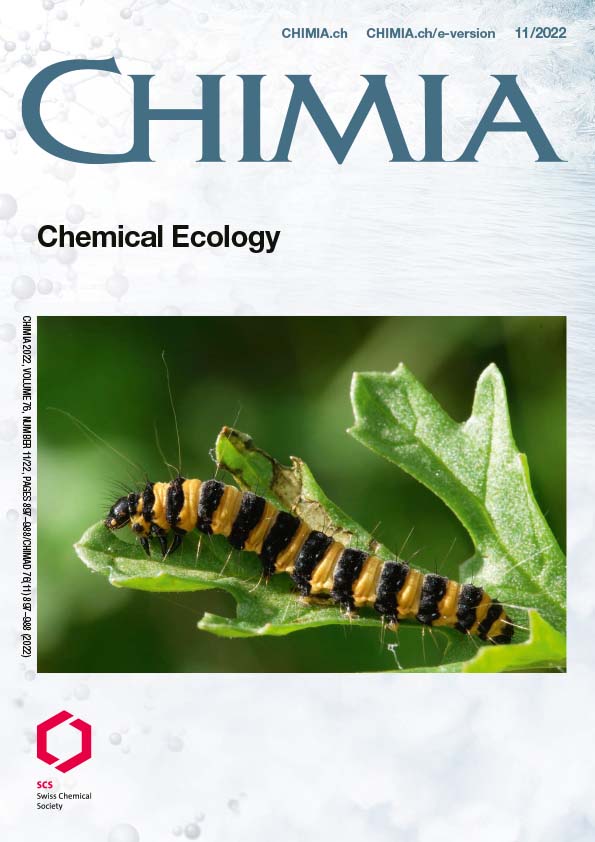Chemical Ecology of Nematodes
DOI:
https://doi.org/10.2533/chimia.2022.945PMID:
38069790Keywords:
Chemical ecology, Chemical signaling, NematodesAbstract
Nematodes represent the most abundant group of metazoans on earth. They utilize diverse chemicals to interact with con-specific and hetero-specific organisms, and are also impacted by compounds produced by other interacting organisms. In the first part of this review we discuss how nematode-derived glycolipids modulate their behavior and development, as well as the interactions with other organisms. Furthermore, we provide a short overview about other secondary metabolites produced by nematodes that affect different life traits of free-living nematodes. In the second part of this review we discuss how different bacteria-, nematode-, and plant-derived chemicals such as volatile organic compounds, root exudates, and plant defenses regulate the interaction between entomopathogenic nematodes, their symbiotic bacteria, insect prey, predators, and plants.
Funding data
-
Schweizerischer Nationalfonds zur Förderung der Wissenschaftlichen Forschung
Grant numbers 186094;169700;197228
Downloads
Published
Issue
Section
License
Copyright (c) 2022 Stephan H. von Reuss, Ricardo A. R. Machado

This work is licensed under a Creative Commons Attribution 4.0 International License.







